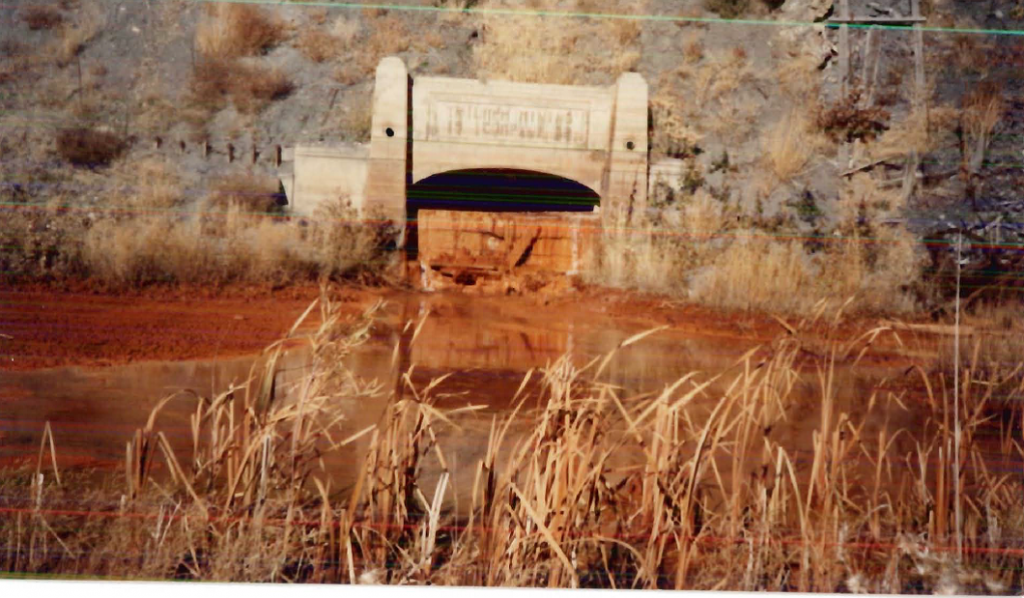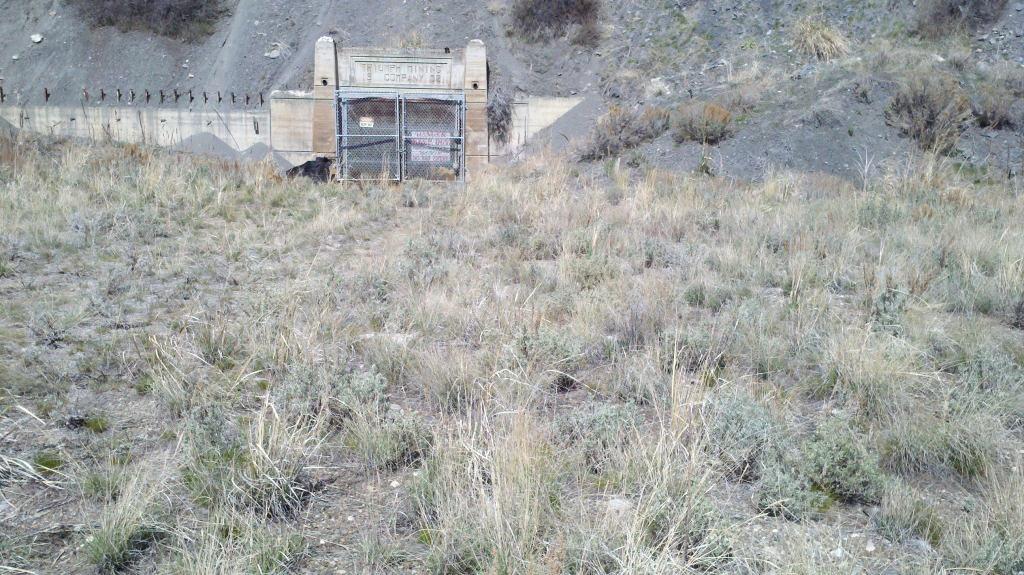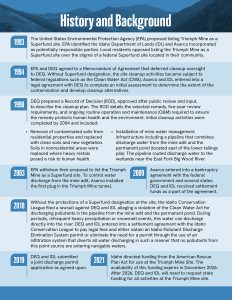The Triumph Mine operated from the late 1800s until the 1950s, producing mostly lead, zinc, and silver. The mine is located in central Idaho about 12 miles north of Hailey near the unincorporated town of Triumph. Historical mining practices left high levels of heavy metals in the soil and water that require cleanup. Today’s mining practices are designed to prevent this type of contamination.
This accordion will not appear on the screen
Monitoring Information
Health Information
Current and Future Cleanup Information
In 1993, EPA proposed listing Triumph Mine as a Superfund site. Due to community opposition, EPA and DEQ agreed to a Memorandum of Agreement (MOA) in 1994 that deferred cleanup oversight to DEQ. Cleanup started in 1998 and was mostly complete by 2004. The Triumph Mine site cleanup actions are reviewed every five years to evaluate the effectiveness and ensure adequate protection of human health and the environment (Fifth Five-Year Review). Although the cleanup was designed to be a permanent solution to address contamination at the site, additional measures are required to maintain long-term protection:
- Regular inspections, maintenance, and monitoring at the site.
- Corrective actions to address areas of soil recontamination.
- Management of groundwater and surface water under the Clean Water Act.
- Continued implementation of the Triumph Community Protection Measure program.
View past Triumph Mine Tailings Piles Five Year Reviews here.
Triumph Community Protection Measures (Triumph CPMs) ensure that cleanup actions remain protective of human health and the environment. The cleanup actions performed under the 1998 Record of Decision included placing clean soil covers over contaminated soil. All of the contaminated soil could not be removed from some areas of the site. Triumph CPMs are needed to ensure contaminated soil left in place do not pose an unacceptable health risk.
The Triumph CPMs describe procedures property owners should take to safely handle and dispose of contaminated soils if encountered during an excavation project on their property. Triumph CPMs also apply to nonresidential properties in the Triumph area that may contain contaminated soils.
The Triumph CPMs are implemented through environmental covenants (ECs), which are a common component of risk-based cleanups. The ECs are designed to control potential risks posed by residual contamination, protect the integrity of the cleanup action, and ensure continued protection of human health and the environment.
An EC is recorded at the county assessor’s office and is attached to the deed for the property. ECs apply the Triumph CPMs to current and future property owners and disclose cleanup information regarding real property. For questions about the Triumph CPMs and to determine if an EC is appropriate for your Triumph property, contact our staff listed below. An example environmental covenant is available here.
This accordion will not appear on the screen
Preliminary Assessment and Remediation Project Coordinator




